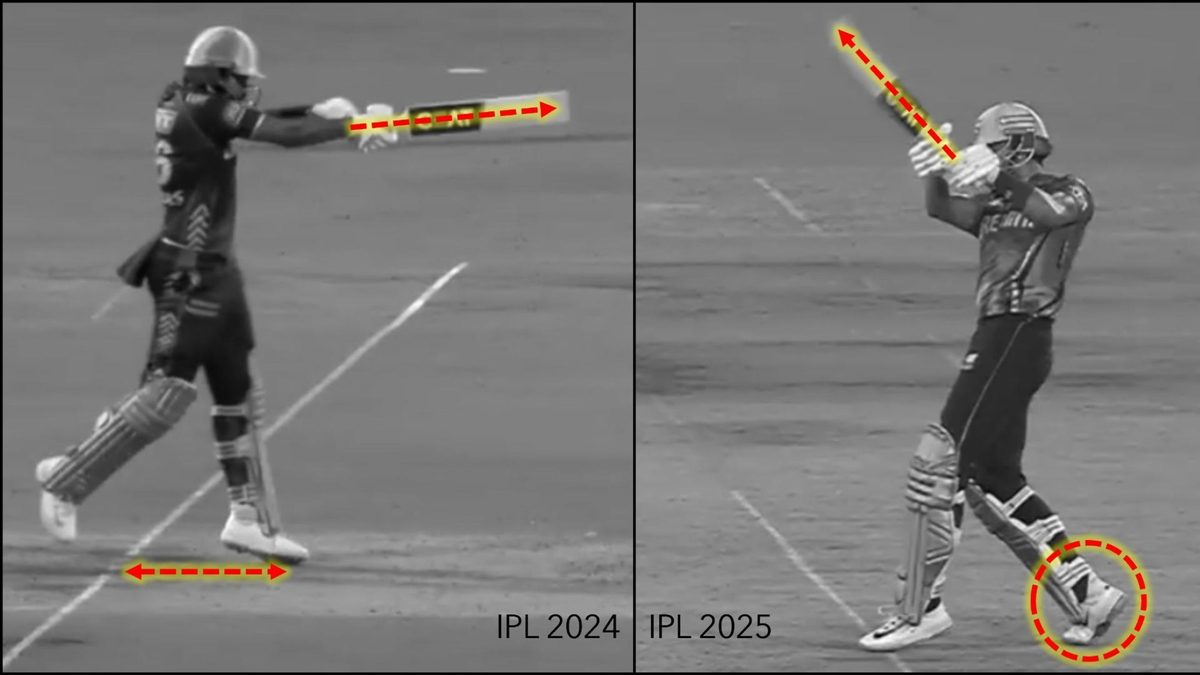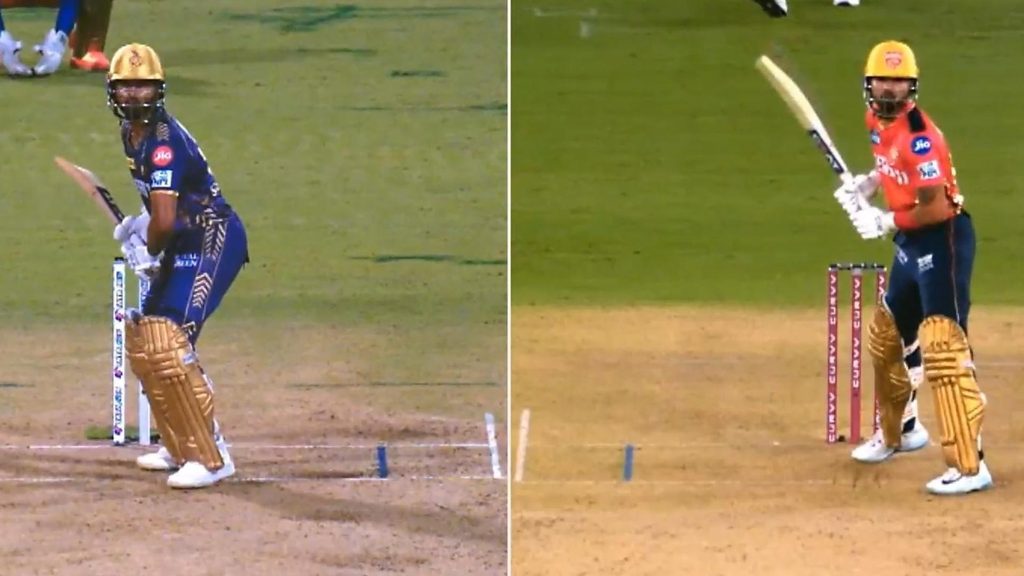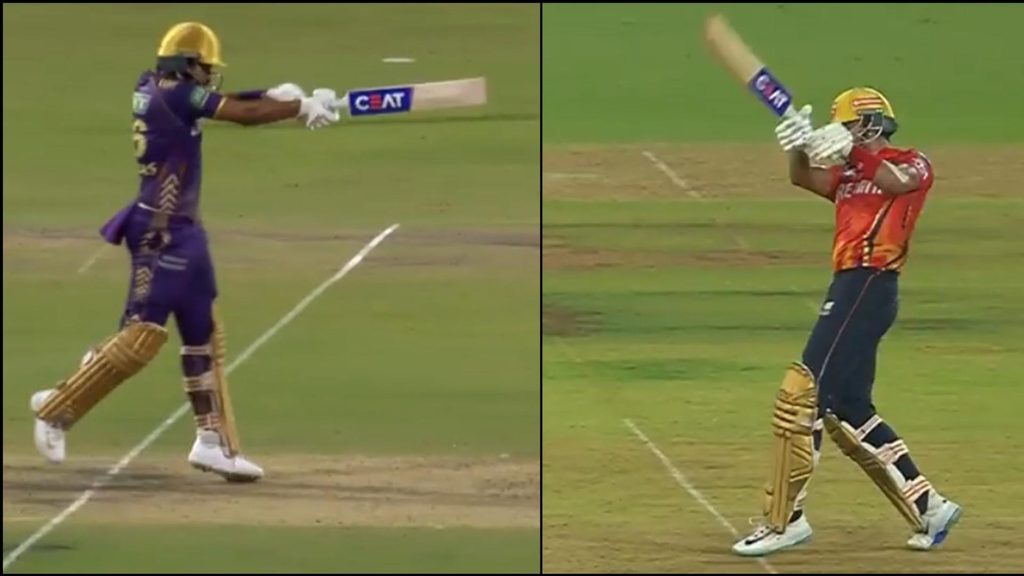
For the longest time, the discussion around Shreyas Iyer the batter was his weakness against the short ball, particularly at high pace.
The chatter did seem to have taken its toll on the batter: “You guys have created that mahaul [scenario] outside that he can't play a short ball, and I feel that people are picking that up every now and then and it plays on your mind regularly,” he said in 2023.
In January this year, he called the criticism “irritating” coming from “people, who haven’t faced 150 kmph bowling” and in February said “maybe I was typecast” (as someone with a short-ball weakness).
But for those tuning in to the IPL, or indeed those who watched the Champions Trophy and the England white-ball series that preceded it, that Shreyas appears to be a distant memory. All of a sudden, he seems to have unlocked a different side of his batting – one that welcomes the test of the short ball, and passes it with flying colours.
Read more: Shreyas Iyer flips the script to remind India of his star quality
In the first five innings of this IPL season, Shreyas has scored 250 runs, averaging 83.3 and striking at 208.3. His 20 sixes are second only to Nicholas Pooran’s 31, and in his last match his 82 off 36 would have been the highlight, if not for the truly brutal Sunrisers chase that followed.
He used to have one weakness the opposition could target. With that apparently out of the way, how can bowlers approach what now looks like a thankless task of restricting him?
How has Shreyas Iyer changed his approach to facing fast bowlers?
The most noticeable change he has made is in his stance at the batting crease, as highlighted by broadcast commentators during his knock against SRH.
 Image credit: JioHotstar
Image credit: JioHotstarThis new stance was employed by Shreyas during the England series as well, and in fact, has been in use since the Syed Mushtaq Ali Trophy last year.
The new stance (right) is markedly different from the old one in two key ways. One, Shreyas is more “open”, i.e. his front leg is out of the way, on the leg side. Two, his back lift is much higher and more angled towards point/gully. In action, he also waves the bat more vigorously before setting up to play.
Shreyas has also introduced a trigger movement as the bowler delivers the ball: he takes a significant backward step. As observed by Michael Clarke on commentary, this initially shifts his body weight onto the back foot, allowing him to then transfer momentum from back to front, into the ball, when hitting down the ground.
Take the example below, of a pull shot from last year’s IPL, and one from this season, both of which were hit for six.
 Image credit:BCCI/IPL
Image credit:BCCI/IPLThe first clear difference is the position of his feet. By introducing that backward step, Shreyas plays from deeper in the crease, giving himself an extra half a second or so to pick the length – and if it is short, to avoid potentially getting rushed by the pace.
Another change is in his back foot. He seems to have made a conscious effort to firmly plant that foot on the ground (in general, not just for the pull shot). In this example from last year, the back foot leaves the ground even as he makes contact with the ball. Without that foot acting as an anchor or a stable base, it means he could potentially lose out on extra power.
Number three, and perhaps most crucial, is where he looks to play the ball. Prior to this year, Shreyas often rolled his wrists in an attempt to keep the ball down, in classical fashion: in the still from IPL 2024 (left), note how the bat face points right at square leg, on its way to closing. Compare that to this year, where he has looked to be more aggressive, keeping the bat face open to hit the ball higher, rather than keeping it down.
A similar clue for what he is attempting to do comes from his body position. In 2024, he used to stand upright, almost looking to get over the ball and smother the bounce. But in 2025, he leans back slightly more – a side effect of looking to hit the ball high, and long.
All these adjustments put together, it would seem, have been tailored towards improving his scoring ability against short-pitched bowling. To his credit, it has worked so far.
In IPL 2022, Shreyas averaged 39, and struck at 130 against deliveries shorter than the pacers’ good length area of 6-8m.
Shreyas Iyer vs pace bowling – shorter than 8m length
| Season | Balls | Runs | Average | Strike Rate |
| IPL 2022 | 90 | 117 | 39.0 | 130.0 |
| IPL 2024 | 79 | 101 | 50.5 | 127.8 |
| IPL 2025 | 33 | 65 | 65.0 | 197.0 |
Last year, his average went up to 50.5, but the strike rate remained low, 127.8. These two seasons suggest that he wasn’t so much in danger of being dismissed by the short ball, but was being tied down – something that can sometimes end up harming a team more significantly in T20 cricket.
But this year, his first five innings have seen him strike at 197 against these deliveries, while averaging 65. It has been only 33 balls so far, but the signs are clear – he has become far more adept at turning shorter balls into scoring options.
Just like any other sport though, cricket is a game of trade-offs. The adjustments he has made have unlocked one run-scoring avenue, but could they have shut another one down?
Give-and-take: What is the price Shreyas Iyer pays for his new technique?
There were whispers of him now being vulnerable to the full delivery on the stumps, after Jofra Archer and Khaleel Ahmed knocked them back in consecutive innings.
But the Archer dismissal came after Shreyas tried, uncharacteristically, getting his front foot all the way outside leg stump and looking to muscle the ball over the off side. The Khaleel delivery was a peach of an inswinger from a left-armer to a right-handed batter, and would have done for many of the best.
His revamped technique has not just made Shreyas proficient at tackling shorter lengths, but also made him more leg-side dominant, in one specific way – six-hitting.
Shreyas Iyer – Boundaries against pace bowling (off side / leg side)
| Season | Fours | Sixes | Total |
| IPL 2022 | 20 / 11 | 3 / 2 | 23 / 13 |
| IPL 2024 | 11 / 11 | 3 / 4 | 14 / 15 |
| IPL 2025 | 9 / 4 | 2 / 9 | 11 / 13 |
The overall count this year does not reveal a preference either way. But two things stand out – one, he has already matched his sixes tally from the 2022 season. Two, he hits far more sixes on the leg side than the off, and vice versa for fours.
His tendency now to almost anchor himself deep in the crease on leg stump means Shreyas limits his mobility somewhat. His ability to score on the off side now depends almost entirely on his hands and his eyes working in tandem. This may explain why fours are more frequent than sixes. He can still time the ball and pick gaps, or chip over an infielder. But crucially, it is less likely that he will generate enough power to send the ball into the stands the way he does on the leg side.
Read more: Who is CSK debutant Shaik Rasheed, India's second-youngest T20 centurion?
The distinction between fours and sixes becomes important because bowling in T20 cricket is often about working out where the margin of error is most in one's favour. If Shreyas is hitting it into the stands on the leg side, but not as much on the off, quicks may be better off protecting the off side boundary, and forcing him to hit to that side of the ground.
An initial look at the data suggests this may be unwise. Against pacers' deliveries that arrive at the batting crease outside the line of off stump, he averages 86 and strikes at 195.5 this year. But much of that is down to him working deliveries on a fourth- or fifth-stump line into the leg side.
Against pacers' deliveries that arrive at the crease outside a fifth stump line, Shreyas' overall record is excellent – but inflated somewhat by cashing in on full balls (essentially, wide half-volleys), which he can throw his hands at and come away with reasonable success. The good length, and short of it on a wide line are where he can be reined in quite significantly – since he now anchors himself to leg stump to muscle through the on side, he is likely losing out here.
Shreyas Iyer – Against pacers' deliveries outside fifth stump in IPL 2025
| Length | Balls | Runs | Average | Strike Rate |
| Fuller than 6m | 8 | 24 | - | 300.0 |
| 6-8m | 3 | 4 | - | 133.3 |
| Shorter than 8m | 15 | 23 | 23.0 | 153.3 |
| Total | 26 | 51 | 51.0 | 196.2 |
The argument against this mode of attack would be that Shreyas can simply step across and look to go across the line, into the leg side. But he may not be able to generate real power if he is on the move, and will be difficult for him to try after having trained the 'plant-and-hit' style he currently employs.
The plan against Shreyas for opposing quicks could well be this:
- Protect the off side boundary and keep the line out wide.
- Err shorter in length, and wider in line.
- Try taking pace off, to force him to generate the power.
None of this is guaranteed to dismiss Shreyas, but theoretically it should help cut off the boundaries. In a format as short as T20, drying up the runs can be more important than trying to take wickets. Do it enough, and the lowered scoring rate will inevitably force batters into higher-risk options – therein lies the opportunity.
Follow Wisden for all IPL 2025 updates, including live scores, team squads & news, team schedule and more. The live streaming details for India, UK and USA can be found here. Check the updated points table, along with the Orange Cap and Purple Cap holders.







